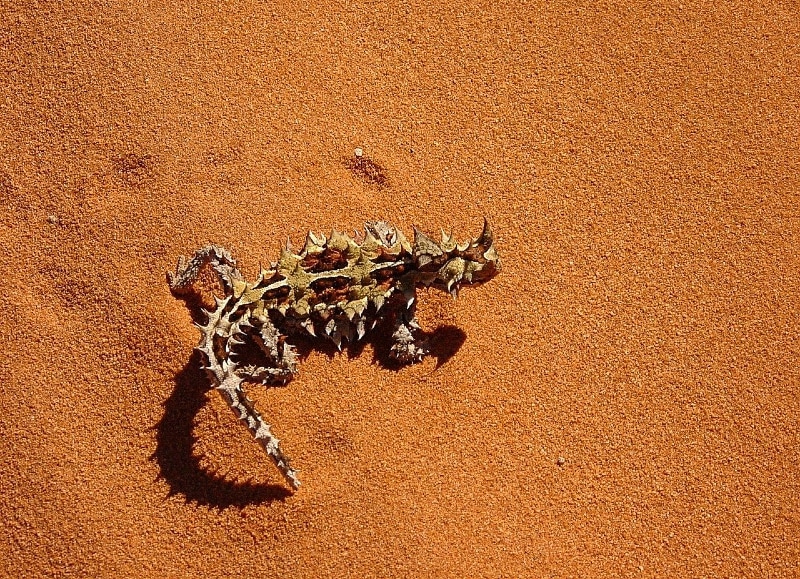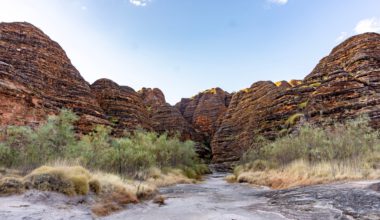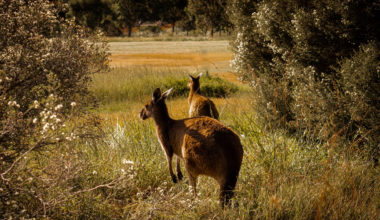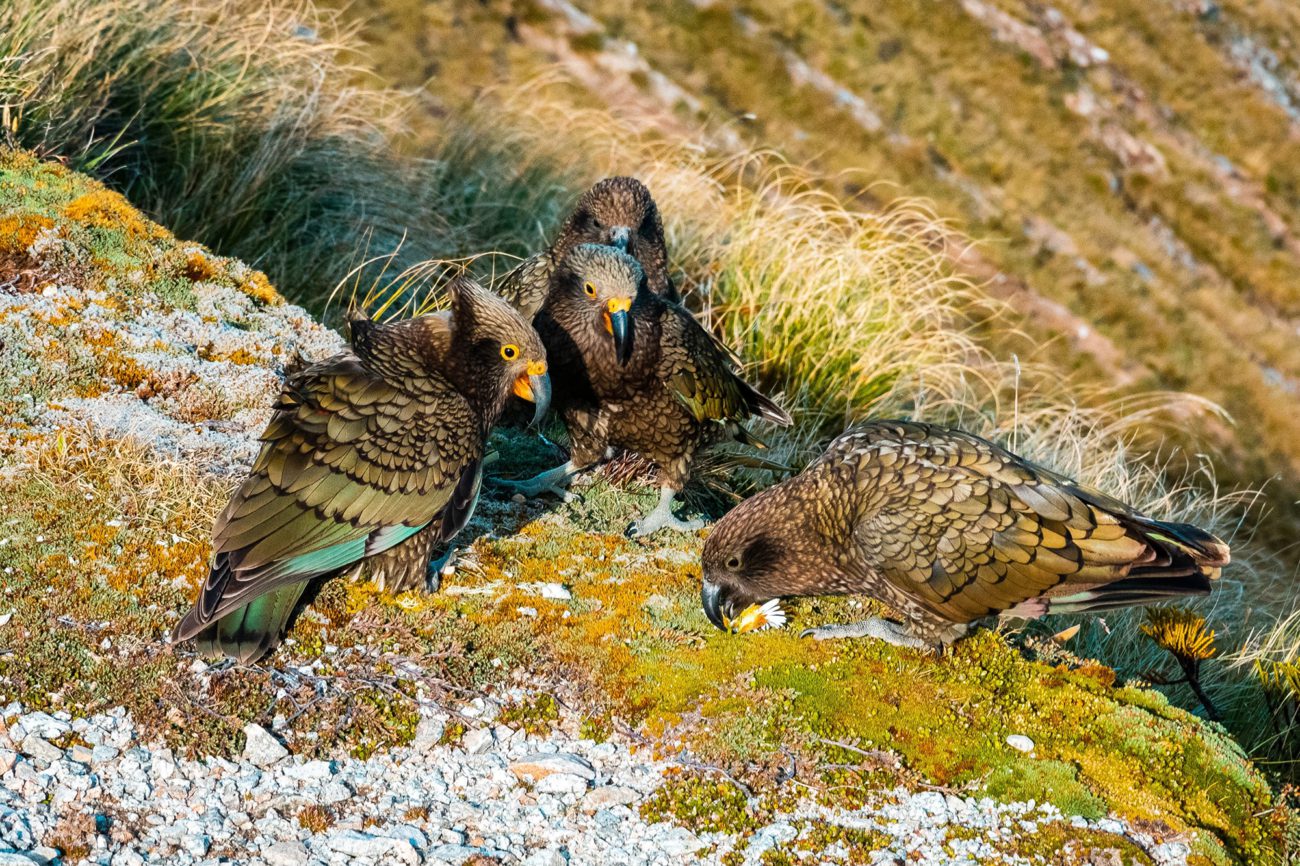While the sacred sites of Uluru (Ayers Rock) and Kata Tjuta make Central Australia a very special destination, we invite you to explore a world easily overlooked in the dusty desert. We’re talking about the world of Australian desert animals, of course! Unfazed by extreme conditions, you’ll find a large variety of wildlife here, all comfortably acclimatized to harsh and arid conditions. Aside from kangaroos, emus, and wallabies — all common icons we love — we’ve curated a list of 10 other intriguing animals that call the desert home. Time to roam Uluru-Kata Tjuta National Park to spot them. Read on to find your favorite!
Mammals
Greater bilby
Let the greater bilby (Macrotis lagotis) and its long, pinkish-colored ears capture your heart! Known as the largest of all bandicoots, the greater bilby is a ground-dwelling marsupial that is roughly the size of a small cat. With a coat of soft grey-blue fur, an adorable pointed snout, and perky, highly-sensitive ears, this little critter is an icon of the sandy outback deserts. They have been featured in the stories and songs of Indigenous Australians and have co-existed with the Aboriginal people for 60,000 years.
Like most desert dwellers, the greater bilby is nocturnal, preferring to forage for food after dark. They seek out the likes of bulbs, seeds, fungi, termites, spiders, and even witchetty grubs with their long snouts. No idea what a witchetty grub is? It’s a common bush tucker food you can snack on. Check out our article Guide to Australian bush tucker: 10 ingredients used in traditional Aboriginal food to learn about this creepy crawly grub!
Unfortunately, this iconic cutie, once a common marsupial found throughout much of mainland Australia, is now considered a vulnerable species. Feral cats and foxes — non-native predators that were introduced into Australia during the days of European settlement — have contributed to the demise of the bilby population. Today, greater bilbies can only be found in certain dry desert areas in the Northern Territory and Western Australia, and in a small corner of southwest Queensland. It is estimated that there are fewer than 10,000 of them left.
Find out more about bilby conservation efforts on the Australian Wildlife Conservancy website.
Spinifex hopping mouse
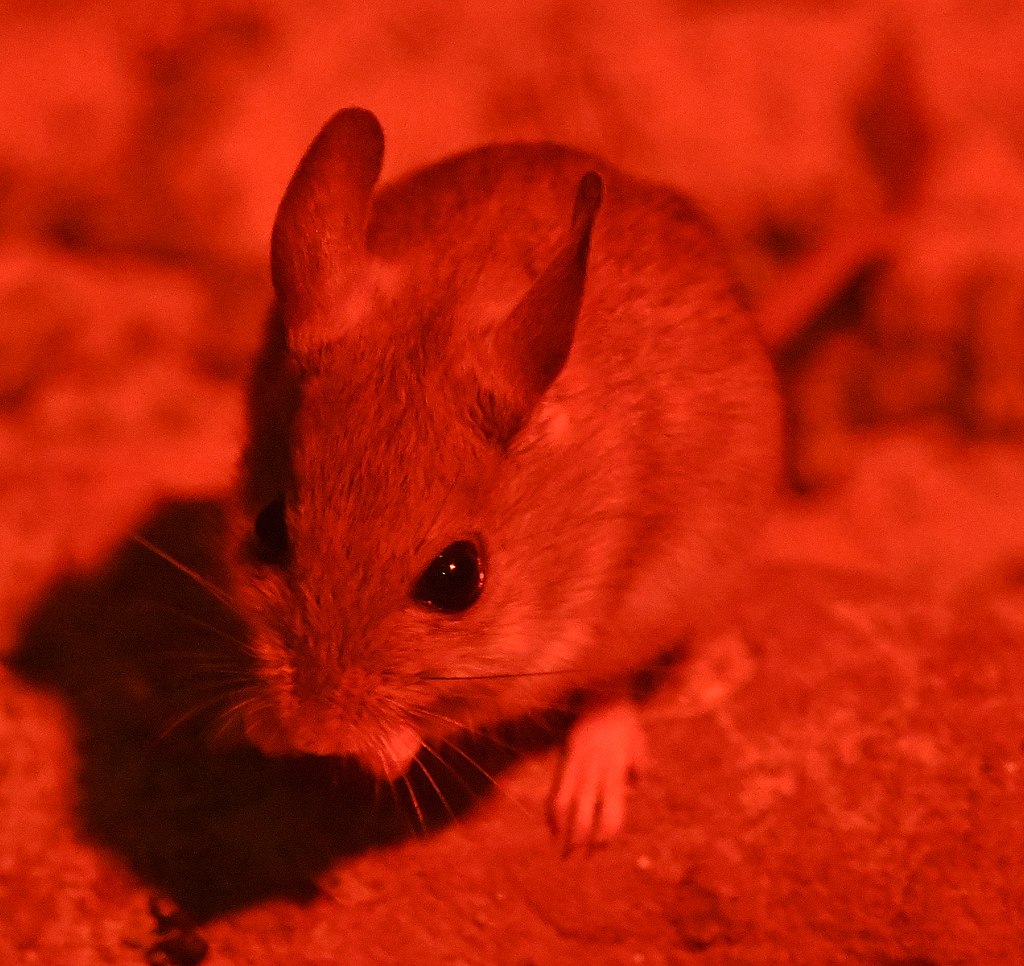
The spinifex hopping mouse (Notomys alexis) can be found throughout the arid zones of Central and Western Australia. As their name suggests, these shy mice make their homes in the spinifex grass-covered sand flats and dunes of the desert. They can grow to about seven centimeters in length and weigh just 32 grams as an adult. Their hind legs and feet are greatly elongated to help propel them forward, and they are usually seen at night, bounding across the open desert with their tufted tails extended for balance, almost like mini kangaroos!
With their omnivorous diet, they munch on a variety of seeds, roots, and invertebrates. Interestingly, their population fluctuates depending on rainfall. After a rainy spell, their numbers tend to explode. These mice have even been known to migrate up to 15 kilometers towards rain! And if the weather gets too hot, they have an unusual trick: these hopping mice can raise their body temperature so that their surroundings feel cooler!
Dingo
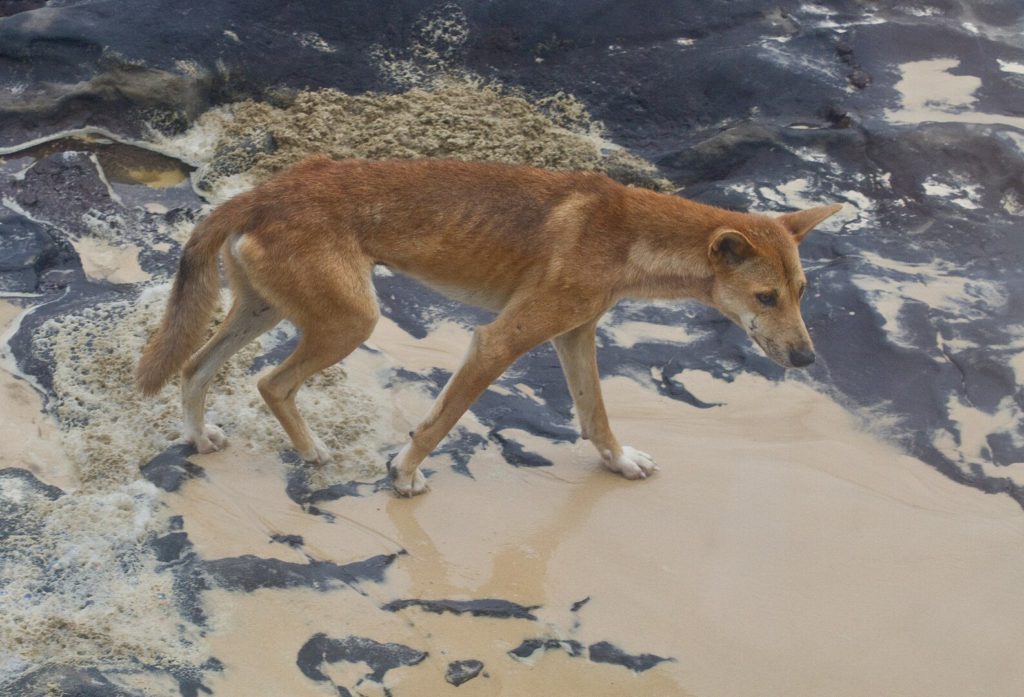
The dingo (Canis lupus dingo) is perhaps Australia’s most contentious land animal. Closely related to dogs, this pack-forming, free-roaming canine has long held a mixed reputation. Some consider the animal a beloved icon, recognized as one of Australia’s most identifiable native species alongside other icons like the kangaroo and koala. Others are quick to dismiss the dingo as nothing more than a wild dog and a territorial pest. Indeed, dingoes are opportunistic carnivores and have been known to hunt domestic animals and attack livestock, making them unpopular with farmers.
Whatever the case, wild dingoes are known to be shy around humans, preferring to keep their distance. They tend to be more active at night, which is when they usually scavenge for food. They prey on large animals including kangaroos, but have been known to eat reptiles, eggs, invertebrates, and birds when other prey is scarce. They are easily identified by their reddish or sandy-colored fur, but you may also encounter black, dark brown, or even white dingoes. While they are common in the arid hot deserts of Central Australia, they have also successfully adapted to a variety of other habitats found across much of Australia, including the temperate regions of eastern Australia, tropical forests and wetlands of Northern Australia, and even the alpine moorlands of the eastern highlands.
A word of caution: if you see them in the wild, don’t get too close! They may look like dogs, but they are very much wild animals that have not been domesticated.
Birds
Pink cockatoo
The pink cockatoo (Lophochroa leadbeateri), also known as the desert cockatoo or Major Mitchell’s cockatoo, is a spectacular species of cockatoo with a lovely, soft-textured pink-and-white plumage and a crown that displays vibrant bands of yellow and scarlet when extended. They grow to about 36 centimeters, making them one of the smaller breeds of cockatoo. They can be boisterous and noisy in the daytime, their high-pitched wavering call making them easy to locate if you’re in their vicinity. The birds usually spend much of their time feeding on the ground or among the branches of shrubs. You’ll also find them hanging around waterholes where they gather to drink at dawn or dusk.
The pink cockatoo is known to be extremely smart and social, though they only nest in pairs and will not tolerate other nesting pairs in their territory. They are usually found in arid and semi-arid inland areas and are easily spotted near Uluru, though they have been known to venture to other regions as well, such as the subtropical areas of South East Queensland. Fun fact: the oldest recorded pink cockatoo lived to 83 years old!
Budgerigar
Recognize these little green-and-yellow mini parrots? You’ll likely have encountered budgerigars (Melopsittacus undulatus), or “budgies”, in your local pet store. They are a very popular household pet around the world due to their attractive markings, relatively small size, low cost, and ability to mimic human speech. But here’s what a lot of pet owners don’t know: budgerigars come straight from the Aussie desert. In fact, these native, nomadic parakeets have co-existed with Indigenous Australians for over 50,000 years!
Found primarily throughout the dry areas of Australia, these little parrots forage for the seeds of spinifex grass, porcupine grass, and saltbush, and they are constantly on the move. They are more than capable of surviving the harsh conditions of the desert and have been doing so for over five million years! Their nomadic lifestyle and ability to breed while traveling between locations has possibly contributed to their success in surviving the harsh desert climate.
Bush stone-curlew
The ground-dwelling bush stone-curlew (Burhinus grallarius) is one of the more unusual birds of Australia. With a leggy, ungainly appearance and a sinister stare, bush stone-curlews have a habit of freezing motionless when disturbed, often in odd-looking poses. Despite this weird quirk, they are very agile birds on the ground, sure-footed, fast, and able to cover plenty of ground when they run. As a terrestrial predator, the bush stone-curlew specializes in hunting small grassland animals, fulfilling an ecological niche similar to that of the roadrunners found in North America.
Endemic to Australia, these birds can be found in many different habitats, able to live in open forests, woodlands, grassy plains, arid scrubland, and tropical areas. While they are widespread throughout the country, their presence has become increasingly rare in the south.
Out in the bush, these birds are easily heard through their alarming calls. Their eerie, ghostly wails culminate in a screeching crescendo that can cut through the night. This may sound quite terrifying to anyone unfamiliar with the call. When threatened, bush stone-curlews also emit a loud hissing noise. Of course, finding them in the wild is a different matter. Their grey-brown plumage allows them to blend seamlessly into a background of dry leaves and twigs, and with their uncanny ability to freeze and stay still for long moments, they’re not the easiest to spot!
Reptiles
Perentie
Big and hefty, coming in at 2.5 meters in length and weighing up to 20 kilograms, the perentie (Varanus giganteus) is Australia’s largest monitor lizard (goanna). They are naturally carnivorous, their diet consisting of insects, birds, rabbits, other lizards, and even young kangaroos. Their long claws make them good at digging burrows and climbing trees.
They are often shy around humans, preferring to avoid human contact as much as possible, which is just as well — they are known to have a pretty nasty bite! Some researchers have been led to believe the bite of certain monitor lizards, including the perentie, might actually be somewhat venomous. First-hand observations in hand bites have seen symptoms that include fast swelling, disruption of blood clotting in the bite area, and a shooting pain. Be sure not to antagonize these creatures!
King brown snake
Speaking of venomous reptiles, meet the fearsome king brown snake (Pseudechis australis), also commonly referred to as the mulga snake. While their myotoxin venom may be relatively weak compared to other Australian species, the true fear factor is the large quantities it can produce, compensating for the venom’s weak toxicity. On average, they can deliver a whopping 180 milligrams of venom in one bite, with a maximum yield of 600 milligrams. Put in perspective, the lethal dose of myotoxin to the human body is 2.38 milligrams per kilogram when injected under the skin.
The king brown snake is also Australia’s second-longest snake, able to grow to an impressive length of three meters. If you come across one in the wild, be sure to keep your distance — they have an unpredictable temperament. While venomous snakes usually only attack humans when disturbed, the king brown has been known to bite people in their sleep!
Great desert skink
The great desert skink (Egernia kintorei) is a type of burrowing lizard with smooth, glossy scales and a short snout. They can grow up to 19 centimeters long. These critters live in burrows, which can extend up to 12 meters in length under the desert sands and have as many as 20 entrances.
Of great interest to researchers, these lizards are known to be extremely social and have been observed working in cooperation with one another to construct and care for their burrows. More unusual: it has been discovered through DNA analysis that young lizards tend to live in the same burrows with their siblings, regardless of their age difference. A study done on 24 separate burrow systems at Uluru-Kata Tjuta National Park has revealed that the juvenile lizards found in 18 of the burrow systems were full siblings, confirming that these skinks tend to be family-based and keep their young in the tunnel system until they mature.
Thorny devil
On the other end of the spectrum is the thorny devil (Moloch horridus), looking the complete opposite of the smooth, glossy great desert skink. Thorny devils are one of the most striking lizards you’ll find in Australia, its body covered in densely-packed spikes. They walk strangely, too, with an odd freezing and rocking motion that researchers have come to believe is the lizard’s way of confusing birds of prey.
These spiky creatures reach a length of about 21 centimeters, with females usually larger than males. Their diet is straightforward — the thorny devil has a penchant for ants. In fact, that’s all it eats! They will sit next to an ant trail and slurp up its prey with its sticky tongue. One devil can consume thousands of ants a day. As for hydration, the lizard is a master of absorbing water. Yes, through its scales! All it has to do is stand in a puddle of water or in wet sand. The water will run up its legs and over its body towards its mouth through the narrow ridges between its scales. Weird, but cool!
You’ll find these little guys wandering across the desert plains across most of Central Australia.
Now that you’re familiar with these awesome Australian desert animals, the only thing left is to explore the vast desert lands yourself! Time to add the iconic Uluru-Kata Tjuta National Park to your destination bucket list! Interested in discovering desert wonders in other parts of the world? We totally think you’d love the magic of Morocco and the Sahara! Check out our two-minute guide “Why travel to Morocco?” to discover the country’s best highlights!
About TourHero
TourHero is a social travel platform that enables you to travel with like-minded people and fall in love with the journey. We work closely with handpicked local operators to ensure every experience curated is unique and exclusive to your travel group. Come with us on epic adventures and create memories that last a lifetime!
